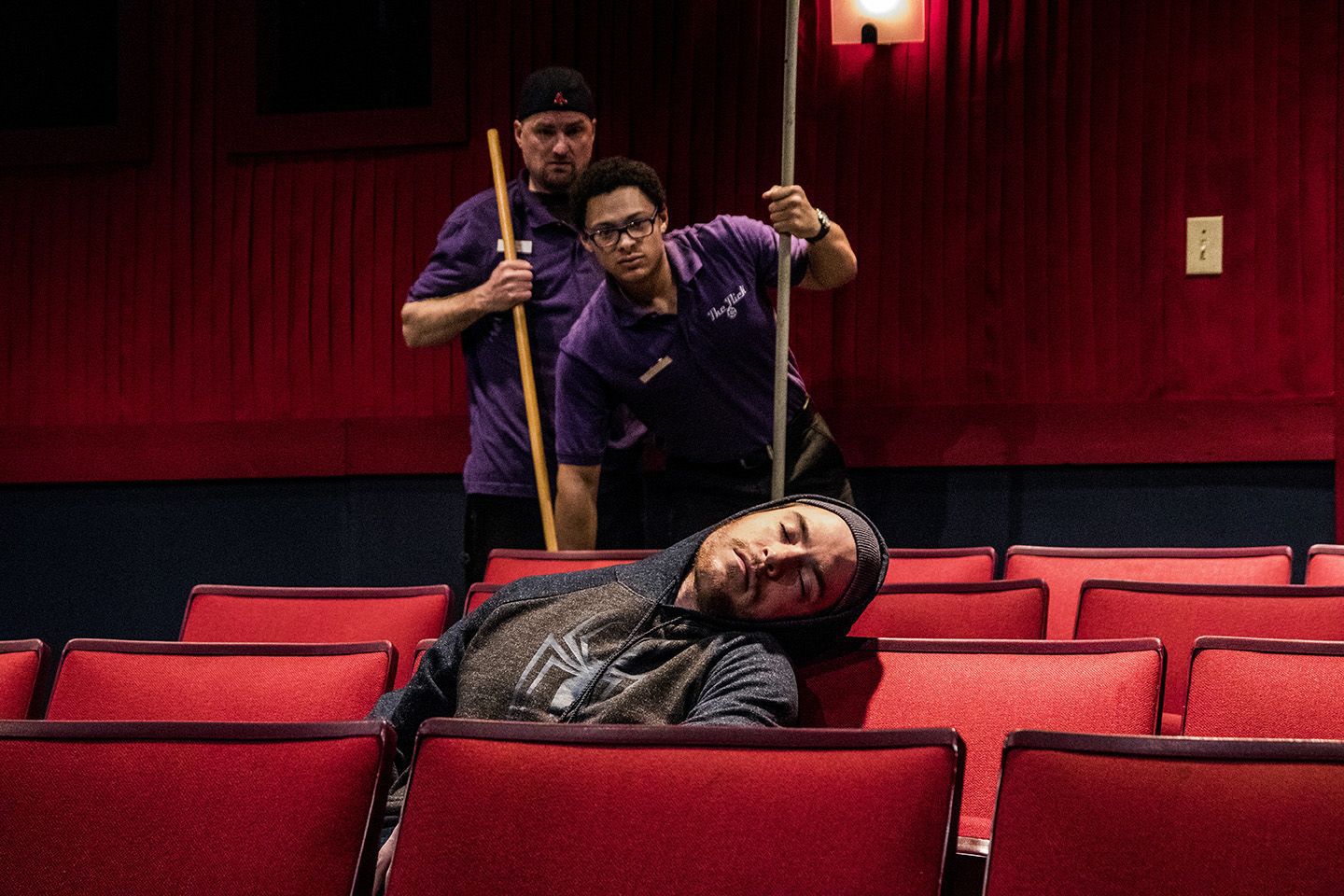MOCA Cleveland celebrates fiscal health and an iconic image as executive director Snyder says its moved ‘from the margin to the center’
By Carlo Wolff

Jill Snyder, executive director of the Museum of Contemporary Art Cleveland, enjoys the sun on Toby’s Plaza outside of the museum in Uptown.
PHOTO | Carlo Wolff
Jill Snyder is happy that the Museum of Contemporary Art Cleveland has completed a $36 million funding campaign. She’s also pleased that the darkly gleaming building that anchors Uptown in University Circle is becoming a Cleveland icon.
Above all, Snyder, MOCA’s executive director, suggested in a recent interview outside the museum at Euclid Avenue and Mayfield Road, she’s proud that it has, so to speak, arrived. It’s been 10 years in the making.
As an independent, noncollecting institution, MOCA joins peers such as the Museum of Contemporary Art in Denver, the Contemporary Arts Center in Cincinnati and the Contemporary Art Museum St. Louis. Like those, MOCA, which was designed by Farshid Moussavi, is in a mid-sized city and has an operating budget of about $3 million (nearly double what it was before it moved from its old location on Carnegie Avenue in 2012).
In addition to similar budgets and urban contexts, these museums collaborate: “Myopia,” the Mark Mothersbaugh exhibit running through late August at MOCA and the Akron Art Museum, originated at MOCA Denver and traveled to the Cincinnati museum.
“What we’re saying is that we are a high performer within our peer group and we’re establishing what our peer group is in a more defined way,” Snyder said. “We have budgets that are comparable in the $3 million range. We’re in midsize cities, not the major metropolitan areas, and each of us has within the past decade or so built a new museum with a design architect.
“So it’s very instrumental for our board and for leadership to look at peer examples to establish new norms and shape our vision moving forward,” she said.

Construction of the Museum of Contemporary Art Cleveland’s current home, shown here nearing completion in 2012, has contributed to the museum’s success in recent years.
PHOTO | Michael C. Butz
At the same time, Snyder said MOCA also has raised its local profile dramatically, moving “from the margin to the center,” stepping up engagement with the Cleveland Museum of Art as CMA “is becoming more attentive to contemporary art,” tripling attendance and expanding its community outreach. “Our exhibitions are receiving more critical attention, and from our surveys, visitor satisfaction is consistently extremely high,” she said.
And the museum now is on firm footing. After two years of planned deficit, 2015 showed a surplus “and this year we’ll be in the black,” she said. “Like any business, we have investors and we feel very responsible to the public trust that’s been invested in us. And we’re very proud that we’ve delivered on our promise while at the same time we have so many goals yet to achieve.”
In addition to fiscal stability, the museum staff has solidified, too. In May, it hired Andria Hickey as senior curator and A. Will Brown as assistant curator.
“We’re very excited by the new curatorial team we’ve just hired, and together we aspire to elevate our global position and deepen our public value,” Snyder said. CV
Originally published in the Cleveland Jewish News on June 24, 2016.
Lead image: The Museum of Contemporary Art Cleveland’s eye-catching, Farshid Moussavi-designed building has become a city icon. PHOTO | Michael C. Butz











